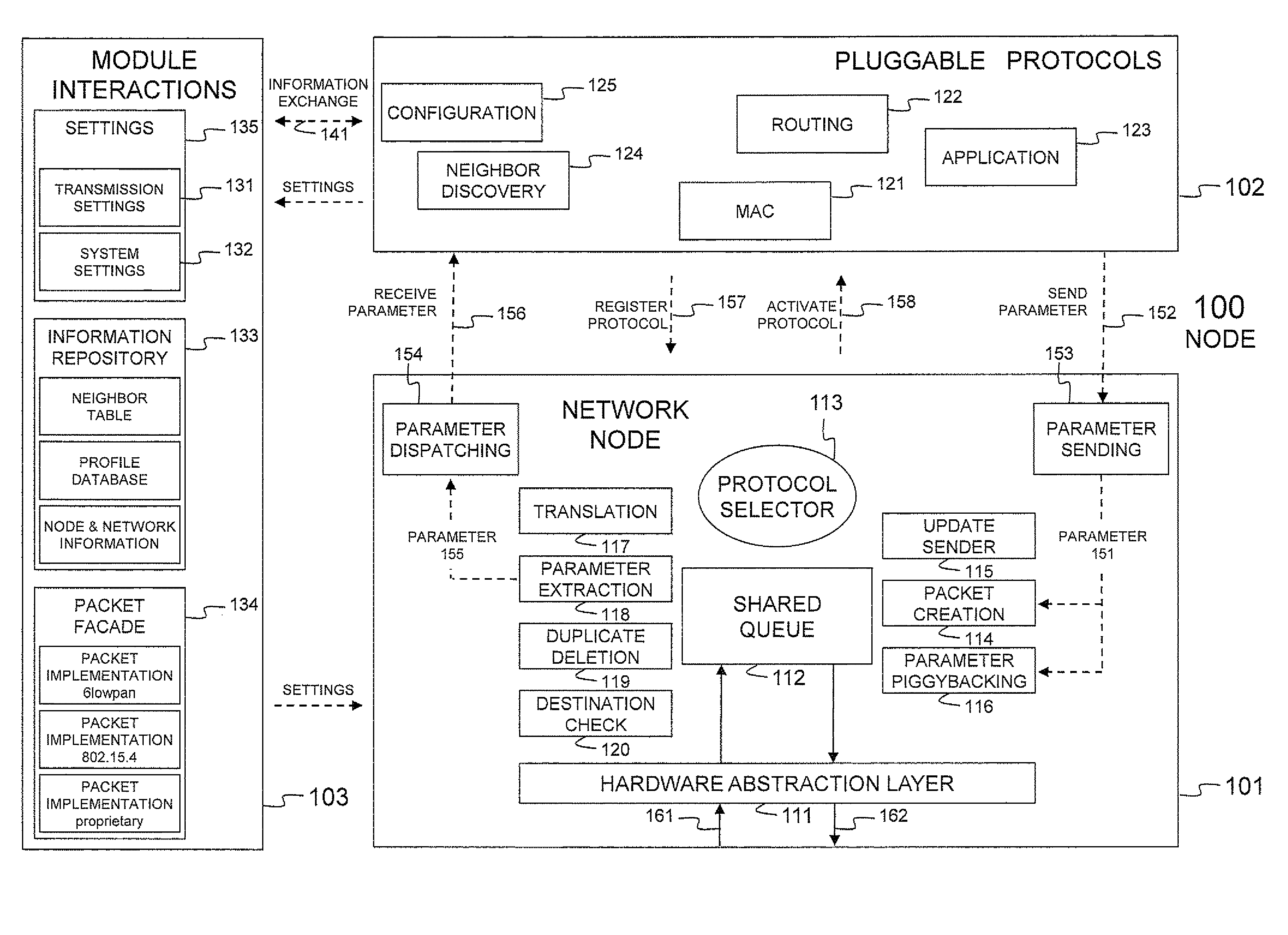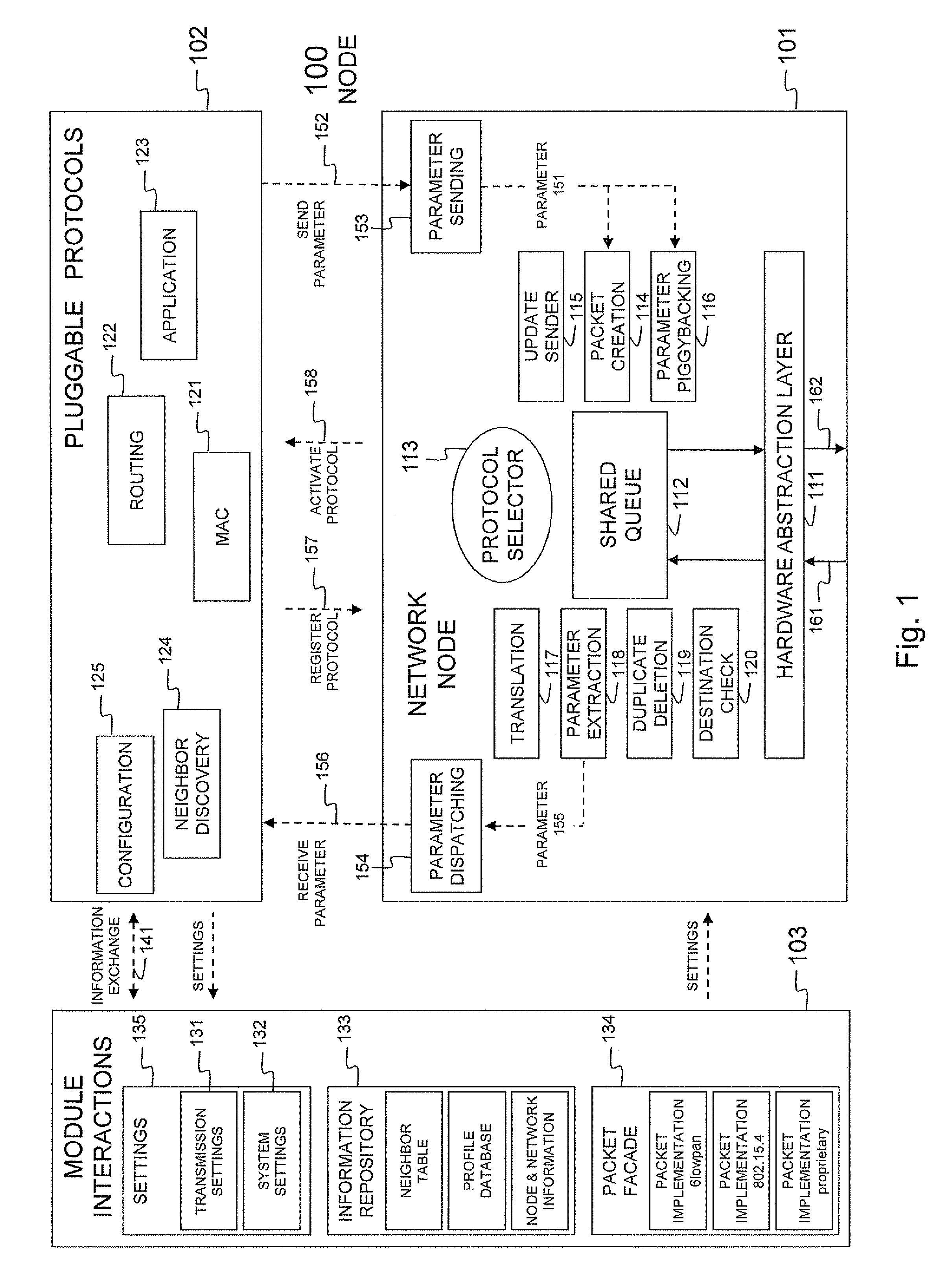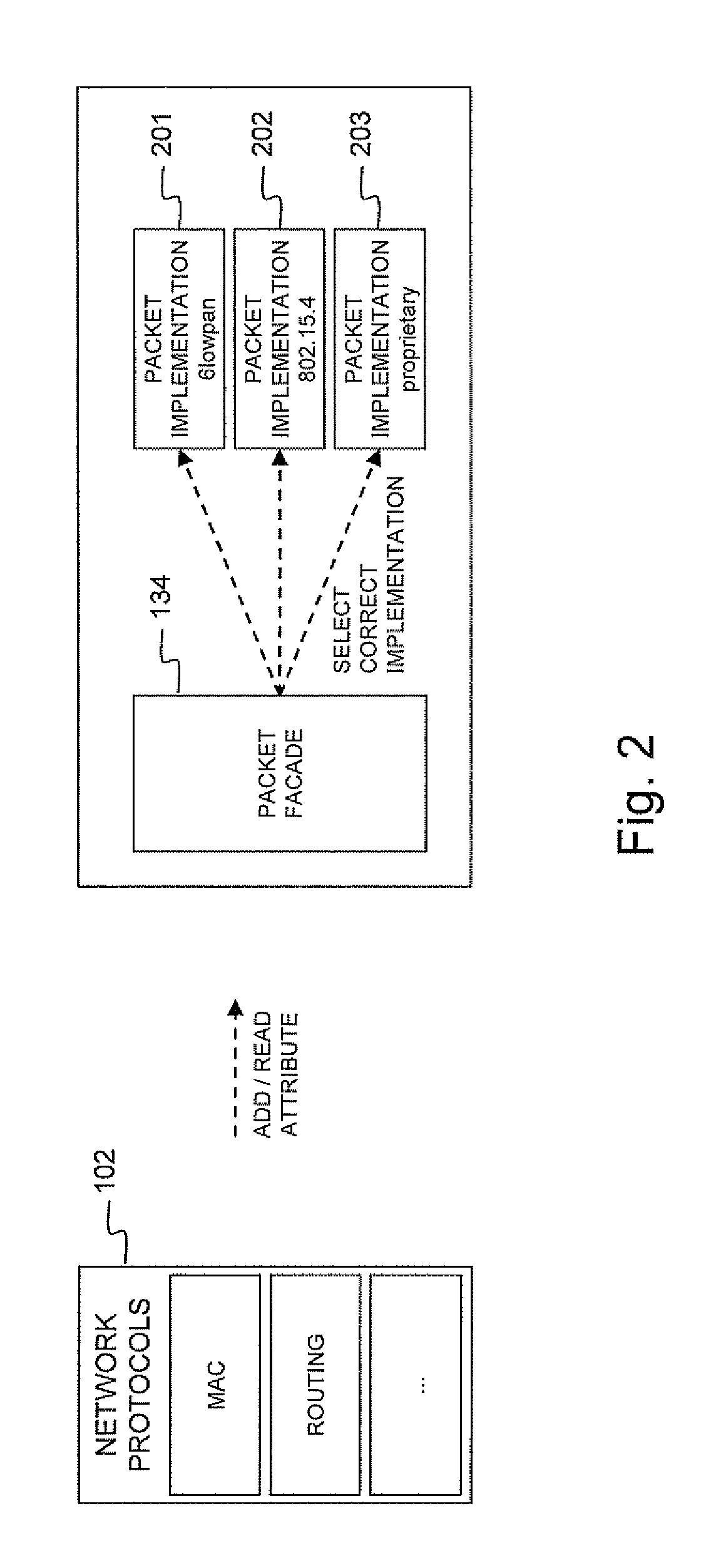Node and wireless sensor network comprising the node
a sensor network and node technology, applied in the field of information handling, can solve the problems of consuming memory and processing resources in each network node, not being able to cope with the heterogeneity of protocols, network layers and data formats, and not being able to ensure always optimal connectivity and protocol independent service quality, so as to remove the overhead of plural protocols and/or layers
- Summary
- Abstract
- Description
- Claims
- Application Information
AI Technical Summary
Benefits of technology
Problems solved by technology
Method used
Image
Examples
Embodiment Construction
)
[0043]FIG. 1 shows an information driven architecture for a node 100 of a wireless sensor network. The architecture of node 100 is designed to support next generation wireless sensor network applications, takes into account the heterogeneity of the sensor nodes and supports energy efficiency and quality of service (QoS) at architectural level. As will be explained below, the architecture of node 100 can be made fully compatible with existing legacy sensor networks. The information driven architecture of node 100 contains network node 101, pluggable protocols 102 and module interactions 103.
[0044]The network node 101 includes preprocessing and post-processing facilities, which support sender updating 115, duplicate detection 119, destination checking 120, extracting encapsulated parameters 118 and translating 117 between different packet types. FIG. 1 further shows the hardware abstraction layer 111 or physical layer, shared queue 112, protocol selector 113, parameter sending module...
PUM
 Login to View More
Login to View More Abstract
Description
Claims
Application Information
 Login to View More
Login to View More - R&D
- Intellectual Property
- Life Sciences
- Materials
- Tech Scout
- Unparalleled Data Quality
- Higher Quality Content
- 60% Fewer Hallucinations
Browse by: Latest US Patents, China's latest patents, Technical Efficacy Thesaurus, Application Domain, Technology Topic, Popular Technical Reports.
© 2025 PatSnap. All rights reserved.Legal|Privacy policy|Modern Slavery Act Transparency Statement|Sitemap|About US| Contact US: help@patsnap.com



